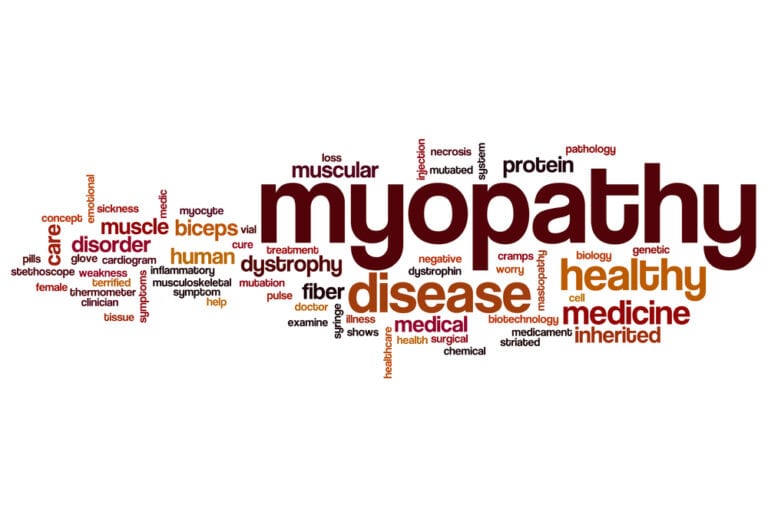Background:
Myopathy is a medical condition in which the muscles get damaged causing impairment of movement, weakness of muscles or other aspects of health, depending on the type of muscle affected. Damage to the diaphragm and other breathing-related muscles may cause shortness of breath and respiratory failure in some cases.
Myopathy can affect an individual at any age and may present in a variety of forms and follow different patterns.
Causes:
Myopathy may be either inherited or acquired and may have various known causes in majority of cases, including infections, autoimmune reactions, excessive alcohol intake, and cancer. The myopathy can be also associated with many medical conditions such as diabetes, thyroid dysfunction, nutritional deficiencies, and liver or kidney failure and many others. Drug-induced or toxic causes of myopathy include steroids, AZT, any statin-related medication used to treat high cholesterol, cocaine, colchicine, amiodarone and many others.
Several genes have been found to be associated with myopathy, mainly in dystrophy and other congenital myopathy. The term “idiopathic” is used when there is no identifiable cause.
Signs and Symptoms:
Symptoms vary among patients depending on which muscle groups are affected. The groups can be divided as proximal or distal muscles. The classification therefore involve the group of muscles involved. Difficulty rising from chairs, climbing or going down the stairs, brushing the teeth or combing the hair suggest proximal muscle weakness. Whereas, weakness of distal muscles will present with weakness of hand grip, handwriting problems, and walking difficulty standing on heels and toes. Some people also complain of muscle cramp and tenderness. Sensory abnormalities may be present if there is an overlying peripheral neuropathy.
Treatment Options:
Patients with signs and symptoms that correlate with myopathy must have an extensive blood work, an electrodiagnostic study (Nerve conduction study and EMG) to confirm the diagnosis by a highly specialized and fellowship-trained neurologist as Dr Yono and Dr Kashouty. Occasionally, a muscle biopsy must be performed to evaluate the pathology of the muscle.
Treatments for the myopathies depend on the disease or condition and specific causes. Supportive and symptomatic treatment may be the only treatment available or necessary for some disorders. Treatment for other disorders may include stopping the offending medication causing the myopathy, starting immunosuppressant medications, physical and occupational therapies, and bracing to support weakened muscles.
Resources:
Muscular Dystrophy Association
http://www.mda.org
Citation:
NINDS: National Institute of Neurological Disorders and Stroke
URL: http://www.ninds.nih.gov/disorders/myopathy/myopathy.htm
Updated July 8, 2015. Accessed October 17, 2015





